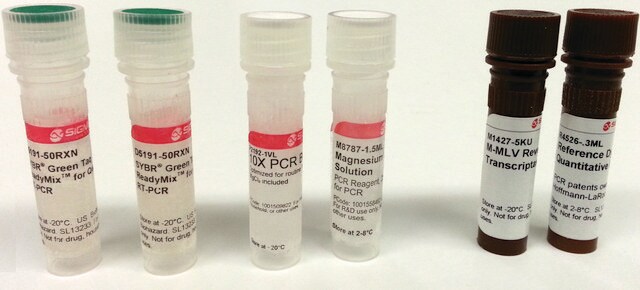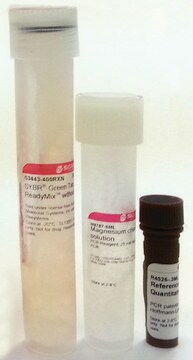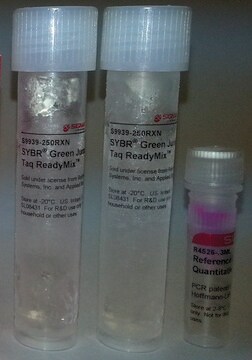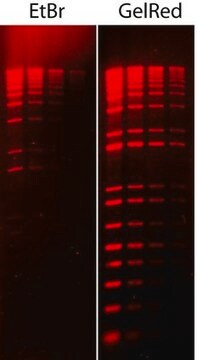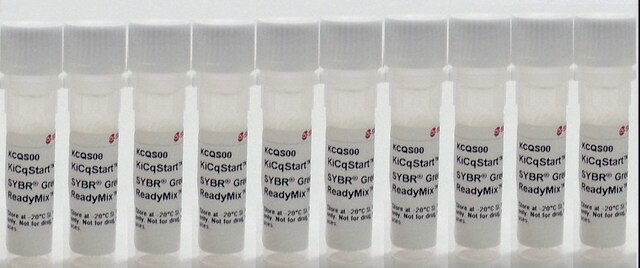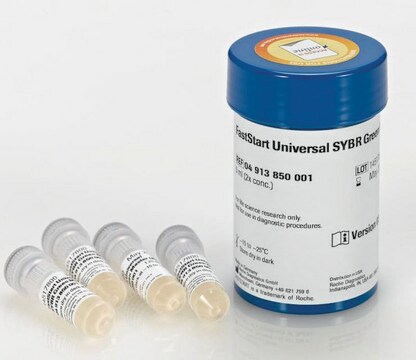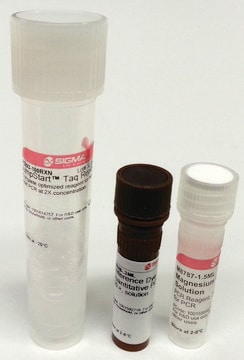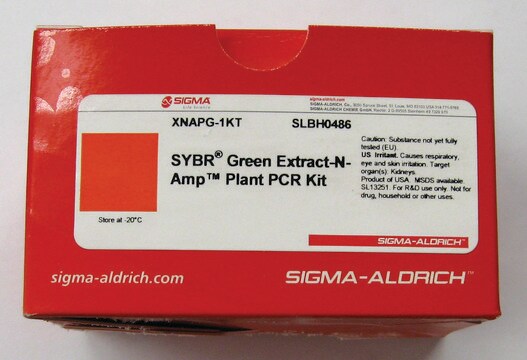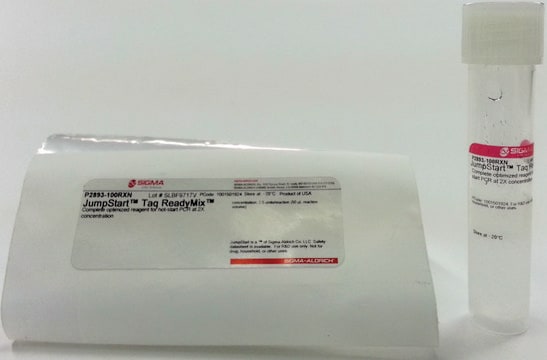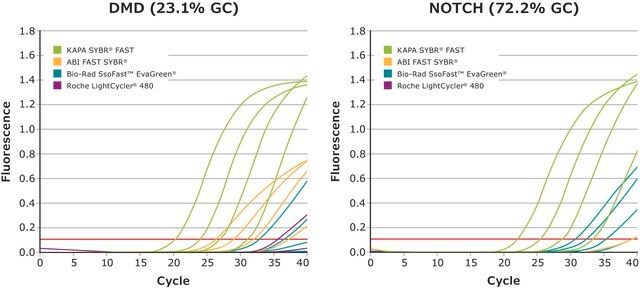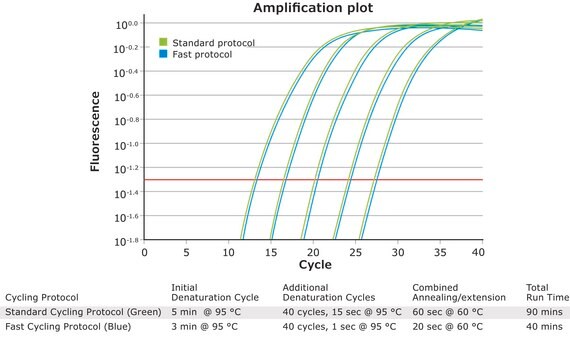S9194
SYBR® Green JumpStart™ Taq ReadyMix™ for High Throughput qPCR
SYBR® Green qPCR reagent, passive reference dye included
About This Item
Recommended Products
Quality Level
form
liquid
usage
sufficient for 20 reactions
sufficient for 2000 reactions
sufficient for 400 reactions
feature
dNTPs included
hotstart
concentration
1.25 units/reaction (50 μL reaction volume)
technique(s)
qPCR: suitable
color
colorless
input
purified DNA
compatibility
for use with ABI 5700
for use with ABI 7000
for use with ABI 7300
for use with ABI 7700
for use with ABI 7900 Fast
for use with ABI 7900 HT
for use with ABI 7900
for use with ABI StepOne
for use with ABI StepOnePlus
detection method
SYBR® Green
shipped in
wet ice
storage temp.
−20°C
Related Categories
General description
Application
Features and Benefits
- The master mix allows consistency and reproducibility from one reaction to the next
- Reduced set-up time as compared to manual or wax Hot Start methods
- Reduced primer dimers
- Allows for room temperature set-up; Ideal for high throughput, quantitative PCR application
- SYBR® Green I dye binds to double-stranded DNA and is ideal for quantifying any DNA sequence. Detection is monitored by measuring the increase in fluorescence throughout cycling.
- JumpStart Taq DNA polymerase prevents amplification of non-specific products while increasing target yield.
- Internal Reference Dye is provided for reaction normalization. Maximum excitation and emission is 586 nm and 605 nm, respectively.
- SYBR Green JumpStart Taq ReadyMix reduces preparation time and the risk of contamination from multiple pipetting steps.
Packaging
20RXN is packaged as 1 X 500 μL
400RXN is packaged as 1 X 10 mL
2000RXN is packaged as 1 X 50 mL
Other Notes
Legal Information
related product
Signal Word
Warning
Hazard Statements
Precautionary Statements
Hazard Classifications
Aquatic Chronic 2 - Eye Irrit. 2 - Skin Irrit. 2 - Skin Sens. 1
Storage Class Code
10 - Combustible liquids
WGK
WGK 3
Certificates of Analysis (COA)
Search for Certificates of Analysis (COA) by entering the products Lot/Batch Number. Lot and Batch Numbers can be found on a product’s label following the words ‘Lot’ or ‘Batch’.
Already Own This Product?
Find documentation for the products that you have recently purchased in the Document Library.
Customers Also Viewed
Articles
Quantitative PCR (qPCR) provides information about gene expression, gene amplification or loss, and small alterations. qPCR is often used to investigate tumor biology and to discover the genetic and epigenetic causes of cancer
The polymerase chain reaction is one of the most widely used techniques in molecular biology. The PCR process consists of three main steps, Denaturation, Annealing & Extension
Protocols
A protocol that can be used as a basic template for qPCR incorporating SYBR Green I DNA binding dye that is amenable to modification and applicable for use as validation for a set of primers.
Our SYBR Green qPCR Protocol is a method designed to detect accurate quantification of gene expression and RT-PCR reactions
Our team of scientists has experience in all areas of research including Life Science, Material Science, Chemical Synthesis, Chromatography, Analytical and many others.
Contact Technical Service
